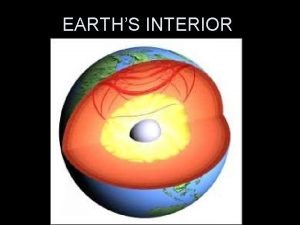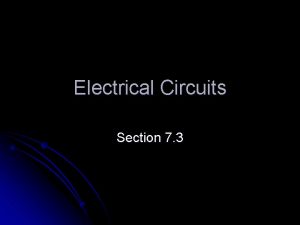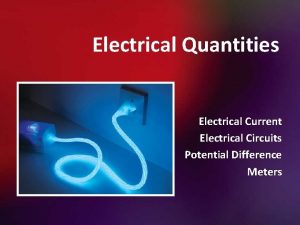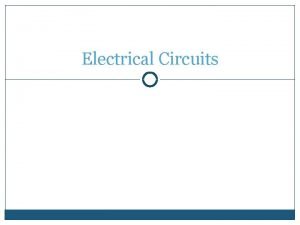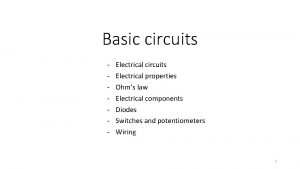Ch 7 section 3 Electrical circuits Circuits rely







- Slides: 7

Ch. 7 section 3 Electrical circuits

�Circuits rely on generators at power plants to produce a voltage difference across the outlet, causing the charge to move when the circuit is complete. �Series circuit – the current has only one loop to move through. The parts of a series circuit are wired one after another, so the amount of current is the same through every part. Open circuit – if any part of a series circuit is disconnected, no current flows through the circuit. Example: strings of holiday lights.

�Parallel circuit – contains two or more branches for current to move through. Individual parts can be turned off without affecting the entire circuit. Example: the electrical system in a house.

�Household circuits use parallel circuits connected in a logical network. �Each branch receives the standard voltage difference from the electric company. �Electrical energy enters your home at the circuit breaker or fuse box and branches out to wall sockets, major appliances, and lights.

Guards against overheating electric wires: Electric fuse - contains a small piece of metal that melts if the current becomes too high, opening the circuit and stopping the flow of current. Circuit breaker – contains a small piece of metal that bends when it gets hot, opening the circuit and stopping the flow of current.

�Electrical energy is easily converted to mechanical, thermal, or light energy. Electrical power – the rate at which electrical energy is converted to another form of energy. Power = current x voltage difference P (watts) = I (amperes) x V(volts)

�To calculate the amount of energy an appliance uses: The unit of electrical energy is the kilowatt hour, which equals 1000 watts of power used for one hour. Energy = power x time E(k. Wh) = P (k. W) x t(h)


